HTIRC E-NEWSLETTER – October 2012
Volume 5 Issue 2
Articles in this issue:
- Acacia koa Research and Timber Industry Trends: TropHTIRC is One Step Ahead of the Curve
- Restoration of Acacia koa on Hawai’i: Probing the Genome
- HTIRC Tree Improvement Accomplishments for 2012
- Research Goals to Identify Impediments to Adventitious Root Formation in Black Walnut (Juglans nigra)
- Yellowwood Genetics for Conservation and Education
- The Indiana Chapter of The American Chestnut Foundation (TACF) has its Annual Branch Event
- HTIRC Cooperates with Woody Biomass Conference
Welcome to this issue of the Hardwood Tree Improvement and Regeneration Center E-newsletter. The HTIRC is committed to enhancing the productivity and quality of Central Hardwood Region trees and forests for the economic and environmental benefits they provide. Scientists at the HTIRC are using conventional tree improvement breeding as well as molecular and genetic technologies to improve the wood quality, growth characteristics, and insect and disease resistance of trees like black walnut, black cherry, red and white oaks, butternut and American chestnut.
Research in tissue culture, tree nursery practices, tree plantation establishment and management, and Central Hardwoods silvicultural systems is aimed at increasing the regeneration success rate for high quality hardwood trees and forests. Some interesting and unusual research areas include examining the potential for propagating trees with “figured” wood: birds-eye maple or curly walnut; and breeding trees that will be an economical source of bio-fuels.
Twice per year, we will attempt to provide interesting and useful information on Central Hardwood trees and forests, as well as sources for additional information and assistance.
Please pass this newsletter along to others who may enjoy or benefit from the information provided. If you would like a closer look at the HTIRC, please visit our web site at: http://www.htirc.org
Acacia koa Research and Timber Industry Trends: TropHTIRC is One Step Ahead of the Curve
By Shaneka Lawson, Plant Physiologist
The TropHTIRC is a private-public research partnership and was established in 2010 as a sister organization to the HTIRC that had already been established on the campus of Purdue University. In contrast to the HTIRC whose primary mission involves the conservation and restoration of fine hardwood species on the mainland, the goal of the TropHTIRC is to increase forest productivity, restoration and conservation efforts for fine hardwood species in Hawai’i and the Pacific Rim. The hardwood work being initiated by the TropHTIRC currently focuses on Acacia koa (koa), a primary component of several montane mesic forests on the islands of Hawai’i, Kauai, Maui, and Oahu. Koa is also one of the most valuable fine hardwoods in the world.
Koa trees have significant cultural importance and are invaluable to the Hawaiian economy. Free-range cattle grazing, invasive grasses, and abiotic and biotic events have severely crippled koa forests to a point where populations are continuing to decline despite multiple attempts at regeneration. Additional research is desperately needed not only for the sake of the tree species, but for the sake of the animals that depend of these trees for survival and the native islanders that depend on the highly-prized often highly-figured wood for their livelihood.
Figure is described as a variation in normal wood grain resulting in patterning on the surface of the wood. Figured koa is most often used by islanders to turn bowls, create ornate objects such as guitars or ukuleles (Figure 1), or to construct upscale intricately-designed furniture (Figure 2). Non- or lightly-figured koa wood is less valuable to woodworkers because its patterns are less distinct and products made from it are less marketable. In 2009, prices for koa lumber varied from $8 per board foot (bf) for non-figured wood to greater than $100/bf for highly figured wood (http://agroforestry.net/scps). Although morphology and ecological factors can contribute to figure development, we feel that figure is primarily controlled genetically.
The TropHTIRC seeks to use cutting edge sequencing technology to identify genes that are differentially expressed in trees containing figure. Also, in addition to taking leaf samples, we will capture differential regulation of tissue-specific genes within sapwood as well. An in depth comparative analysis of koa trees that have developed figure with those that have not developed figure is an important first step in the discovery process. This isolation and characterization of genes differentially regulated between the two samples may help determine the genetic basis of figure within koa wood.
The eyes of the timber industry rest firmly on the bottom line. The costs of resources and manpower used to generate a product must be lower than the price of the product otherwise they lose money. Never has that reality been more apparent than in the last decade when home design trends determined that oak hardwood floors were no longer fashionable and maple was the new “hot” product. In addition to maple, other blonde woods were also in demand such as hickory, poplar and ash. Research initiated by the TropHTIRC will introduce and encourage a greater market for tropical species native to the United States. These species are swiftly becoming more popular because their limited supply and high demand result in hefty profits for the lumber industry and its partners.
The TropHTIRC has established a collaborative working relationship with conservation agencies devoted to the protection of native flora and fauna in the Hawaiian Islands and is dedicated to the continued development and implementation of programs that focus on revitalization of the native species. This project assesses the need for koa research and forest management strategies that can be immediately implemented to protect remaining koa forests while ensuring this fine species gets the fanfare it deserves.

Figure 1. Hand-crafted ukuleles. The back and front of a ukulele made of
Acacia koa wood with a non-linear figure pattern (A, B) and the front and back of a
ukulele with a more striated figure pattern (C, D). Both
instruments could
be
marketed and sold for upwards of $1,000.00.
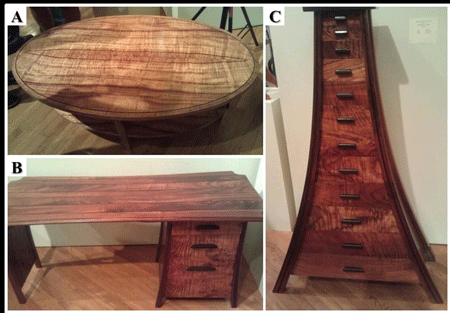
Figure 2. Ornate furniture designs. Upscale furniture designs such as coffee tables
(A), writing desks (B) and intricate chest of drawers designs (C) can be found displaying
price tags that range between $1,000.00 and $5,000.00 at exotic wood shows in Hawaii.
Restoration of Acacia koa on Hawai’i: Probing the Genome
By Shaneka Lawson, Plant Physiologist
Acacia koa A. Gray (koa) is a tree species endemic to the all islands within the Hawaiian archipelago but only exists in populations of sufficient size to be called forests on Hawai’i, Kauai, Maui and Oahu. Koa trees are most often found between 1,500 and 4,000 feet in elevation also populations have been found as far up as 7,000 feet. Populations of koa used to be found at much lower elevations until the introduction of a vascular soil-borne fungus known as Fusarium. This fungus is endemic around the world and causes the formation of blockages in vascular (conducting) tissues preventing water flow throughout the tree ultimately leading to tree death.
Koa trees are identified by a round, leafy dark green crown composed of sickle-shaped leaves when mature and bi-pinnate leaves when juvenile (Figure 1). Koa bark is light grey and remains smooth on juvenile trees before converting to furrows as maturation is reached. When grown in plantations or in the presence of other tall tree species koa trees grow tall and straight often reaching heights of 60-80 feet. Open-grown koa are less restricted with branches forming closer to the ground before spreading profusely. The flowers of koa trees are pale yellow in colour and are about the size of a small acorn. These flowers will later develop into long, thin seedpods (Figure 2).
In the past, research on koa focused on visual observations of morphology for the purpose of establishing selective breeding systems and seed collection. As we continue in the twenty-first century, advances in technology have made projects that focus on genomic identification possible. Current research involving koa focuses on several topics of interest such as: genetic variation and population dynamics among koa populations on all of the Hawaiian Islands, disease discovery and prevention methods, genetic improvement through breeding, and conservation strategies that involve the removal of feral ungulates from forest areas (Figure 3). The efforts of the TropHTIRC are primarily focused on Next Generation Sequencing (NGS) technologies, de Novo assembly of the koa genome, and analysis of gene expression levels of trees growing at different elevations in Hawaii.
Conservation and restoration of koa populations is a problem that will be addressed from multiple angles by the TropHTIRC. Using cutting edge Next Generation Sequencing (NGS) technologies, TropHTIRC researchers aim to identify genetic variation between various koa populations situated along a selection of elevational transects and evaluate which genes are responsible for improved survival characteristics in light of a changing climate. These data will allow closer inspection of the variation in genetics between koa populations along various regions of the island of Hawai’i. Other collaborators are using NGS to detect attributes of the koa genetic code that provide certain trees with resistance to specific invasive pests while others are susceptible. Additional efforts to sequence the koa genome in its entirety will also be initiated.
We hope to plant koa trees in areas previously inundated with invasive grasses to improve forest quality and restore native wildlife habitats. Koa flourishes in areas that have been scarified thus the removal of invasive grasses in itself will encourage regrowth provided the seed bed is healthy (Figure 4). Replacement of dead or dying koa trees is also critical to the survival of the species. Koa forest fragmentation is the result of a number of interacting variables with poor land use and neglected maintenance being the most detrimental. Improving the connectivity of isolated pockets of mini-forests will help restore native habitat and encourage native animals to traverse throughout a greater expanse of forest cover. Increased habitat availability will contribute greatly to the likelihood of population increases as a result of diminished habitat competition. The establishment of a working relationship with conservation agencies dedicated to the protection of the native flora and fauna in the Hawaiian Islands is vital to the research community as well as the development and implementation of programs focused on island revitalization.
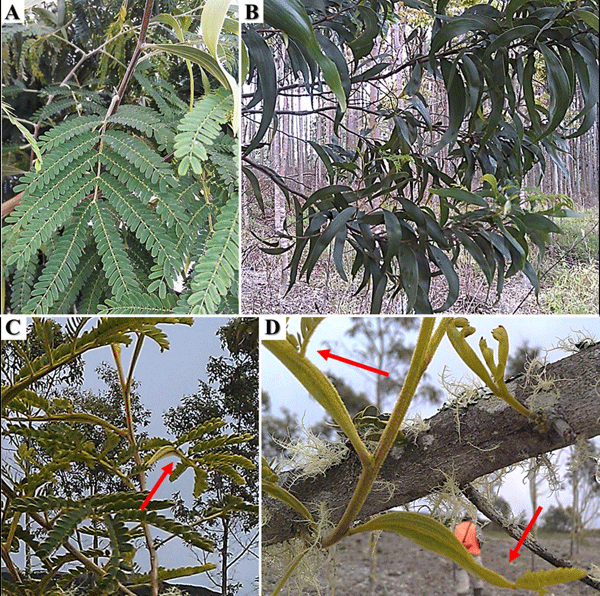
Figure 1. Acacia koa has two leaf forms. The bipinnate leaf form is representative of koa development
at the juvenile phase (A) while the sickle-shaped phyllodes are indicative of the mature leaf form (B).
Additionally, the transition from one leaf form to another occurs on the same stem (red arrows, C and D).
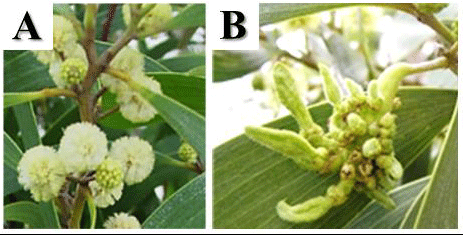
Figure 2. Koa trees in bloom. Koa flowers (A) and seedpods (B) can be seen year round
however flowering occurs primarily between January and March and can continue later into
the year with seedpods falling between August and December.

Figure 3. Feral cattle are a constant problem to reforestation and regeneration
areas because they graze profusely on koa shoots and seedlings.

Figure 4. Acacia koa stands demonstrating natural regeneration. Regeneration efforts in some
protected areas are improving because the areas have been fenced to keep out ungulates (A-C).
HTIRC Tree Improvement Accomplishments for 2012
By Jim McKenna, Biologist
Butternut Seed Orchard Updates: Two new pure butternut (Juglans cinerea) orchards for the USDA Forest Service National Forest, Region 9, were planted this spring. Each orchard is composed of grafted clones derived from the area around two national forests: the Wayne National Forest in southern Ohio, and the Hoosier National Forest in southern Indiana. Only native and pure butternuts, no hybrid trees, were chosen to clone. We selected the most healthy and vigorous one or two trees per stand. The purpose of these orchards, along with other similar orchards is to preserve pure butternut germplasm and to grow a diverse collection of trees to produce genetically diverse seedlings to ultimately breed into butternut long lasting resistance to butternut canker. The HTIRC and staff from the National Forest along with state and private foresters from Ohio and Indiana worked together to select trees, collect graft wood, and graft the trees over the last few years. A number of clones were derived from the existing breeding blocks at Purdue maintained by the HTIRC from collections we made in 2005 and 2006.
The Hoosier NF orchard was planted off of the forest on private land owned by Office Furniture Systems Inc., in Huntingburg, IN. It has 27 clones and 66 grafted trees planted at a 24’ x 24’ diagonal spacing, on 0.8 acres. There is room to plant 16 more trees next spring several additional clones. The Wayne NF orchard is planted on a previously cropped field along a stream in southeastern OH within the border of the forest. It contains 27 clones but with a greater number of grafts – 81 in total. The spacing is a little tighter too at 20’ x 20’ diagonal. There are 48 additional spaces to fill next year with additional clones we have grafted this year. The total size of the orchard is 1.2 acres. At this site, we deer fenced the entire orchard after planting utilizing a 7.5-foot tall plastic mesh deer fence.
Our first pure butternut seed orchard was planted in 2007 in Walla Walla, WA with the Nelson Irrigation Company. This orchard is small with only 14 clones and 28 trees, which were extra grafted trees we had in 2007. This orchard has been very successful on two fronts: First, it demonstrates a great model for growing a forestry seed orchard on urban industrial manufacturing ground free of typical forest pests and competing vegetation. Second, it has demonstrated excellent seed yields since squirrels and damaging insect populations and competing vegetation are absent. Ease of access to maintain the trees and harvest the seeds is also keeping costs down. We harvested just over 100 seed in the third year and over 300 in the fourth year. After the fifth growing season last fall, we harvested just over 1,000 nuts. From this seed, we have been able to provide seedlings to the Wayne NF to begin reintroducing butternut into enrichment plantings in 2011 and again this year in 2012. Next year, we will have over 200 seedlings to provide the Wayne and Hoosier to outplant several years before their own orchards begin seed production.
From a large range-wide collection of butternut seed families in 2008, we were able to cooperate with other institutions to set up seedling seed orchards of pure butternut in Wisconsin, Tennessee, and West Virginia in 2010.
The HTIRC began inoculating and screening pure and hybrid butternut seedlings with the butternut canker fungus in 2008 and have continued annually inoculating seedlings as they reach 4 to 5-years-old. In 2010, we began selecting resistant individuals from these screening tests and now have made 31 selections. In 2011, two seed orchards were established to grow this material at 24-foot x 24-foot orchard spacing and with room to add new selections into over time. These orchards at Purdue are composed of both pure and hybrid butternut trees from numerous families from across the range. The seed from these orchards will serve three purposes: 1) confirming resistance through new screening tests, 2) providing seed for enrichment plantings or plantations to include butternut as a timber species, and 3) as a source of resistance for other groups to grow alongside locally adapted pure butternut to develop their own resistant regional butternut stock. The HTIRC began acquiring and collecting butternut clonal and seedling accessions from 2002 until 2008, and then shifted to propagation of new seed orchards to perpetuate pure butternut from 2007 until 2012. Now the HTIRC has entered the phase of intensifying screening and selecting resistant material.
15/16 American Chestnut: We established a second BC3F3 15/16 American chestnut test planting on the Hoosier National Forest this year with the initial resistant material produced by the American Chestnut Foundation (TACF). This year’s site was selected to be drier and better drained than last years site which suffered 85% tree mortality from flooded and cool temperatures in the spring of 2011. To make up for the losses from the 2011 site, we replanted more than 300 trees this spring. Not only did we choose a drier site for 2012, we also planted one-month later to avoid the chance of too much rain after planting. The drought and record high temperatures created a second difficult year. Both sites are clear cuts surrounded by larger timber trees and only with the help of the fire crews on the Hoosier National Forest and the dedication of their foresters were we able to save these sites by irrigating them twice. These two plantings will prove whether or not the resistance and adaptability of TACF 15/16 American chestnut is adequate at this point to grow long-term in southern Indiana’s forests.
New Improved Black Walnut: The information gained from progeny testing will allow us to recommend clones (or mother trees) to grow together in future seed orchards to produce improved black walnut seed stock. In 2010 and this past year we have begun to select and graft individual excellent trees from known families. Last winter, we selected and grafted 38 new clones from five different 8-year-old progeny test plantations. These trees will be planted into new clone banks to evaluate their genetic potential further, and as they mature and produce seed, will be progeny tested too. This material is readily available as a source of graft wood for establishing new grafted clone tests or own-rooted trials in the near future.
Thousand Cankers Disease (TCD): We have continued to send walnut seedling families to Dr. Ned Tisserat at Colorado State University to inoculate and screen for resistance to the fungal part of thousand cankers disease. This year, after several years of replicated testing, we have concluded that significant variation in response to the TCD fungus exists in black walnut. This suggests that TCD resistance is present in the walnut population. We have begun to initiate a larger screening study to test black walnut from across the native range to measure the levels of resistance and susceptibility in wild populations along with further screening of improved timber and nut varieties from Missouri. Working collaboration with the University of Tennessee, entomologists at Purdue University have found variation in attractiveness to the walnut twig beetle involved in TCD among a group of randomly selected black walnut clones. This work along with the fungal screening and field trials in TCD infected areas are ongoing and will hopefully elucidate a range of resistance mechanisms that we may easily incorporate into future improved walnut stock.
Research Goals to Identify Impediments to Adventitious Root Formation in Black Walnut (Juglans nigra)
By Micah Stevens, Ph.D. Graduate Student
Black walnut (Juglans nigra), native to the Eastern deciduous forests of North America, has long been prized for its wood, being used for veneer, cabinetry, gunstocks, and other fine hardwood products. Black walnut also serves important roles providing mast and habitat for wildlife, watershed filtration, forest restoration, as well as contaminated soil reclamation. The economical and ecological importance of black walnut has merited its cultivation and genetic improvement for over a century. Once elite genotypes were recognized it became necessary to establish an efficient means for propagation.
Grafting has been the traditional method for propagating superior black walnut genotypes, however this method is not always ideal. Grafting requires a high level of skill, is time and labor intensive, does not always result in a high rate of success, and the resulting trees are not growing on their own roots which can have an adverse effect on growth. Tissue culture is a valuable alternative to rapidly produce clones of desired species. Attempts to propagate black walnut via tissue culture have been made for decades, however there has been limited success as a result of the inability of black walnut to predictably and reliably produce adventitious roots (AR). Adventitious roots are roots that typically originate on any above ground part of the plant such as the stem, and these are integral for clonal propagation systems. The mechanisms of AR formation in black walnut involve many external and internal stimuli, and this process is unfortunately not well understood and therefore a major roadblock for successful clonal propagation of elite black walnut genotypes. The objective of my research in the Pijut lab is to investigate the physical, metabolic, molecular, and environmental factors that are controlling and inhibiting AR formation in elite black walnut genotypes. The information gathered from these studies will hopefully allow a system to be established to successfully propagate black walnut via tissue culture.
Studying AR formation requires large quantities of plant material in order to be able to compare plant tissue that has different degrees of rootability. Juvenile material, such as shoots from seedlings, often roots at a higher rate than shoots from mature trees which rarely produce AR, if at all. This difference in rootability will allow us to compare the two types of tissue, and determine what could be changing as the tree matures that is preventing the formation of AR in older material. We have successfully developed a tissue culture system that will allow us to quickly produce black walnut shoots to be used in rooting trials. This system involves isolating single nodal stem sections that are surface disinfested and placed into culture to allow the lateral buds to break and elongate (Fig. 1). As these shoots elongate the single nodes are moved to a large flask on a rotary shaker containing an optimum liquid culture medium of nutrients and plant growth regulators that allows for rapid shoot multiplication (Fig. 2). This technique works for nodal sections originating from both juvenile and mature sources.
As enough plant material of desired genotypes is regenerated we can begin examining the factors controlling AR formation. The formation of ARs follows a specific progression passing through three established stages: initiation, induction, and elongation, each with its own specific hallmark. These stages have been identified in shoots of other hardwood species such as oak, chestnut, and poplar, but not in black walnut. By examining ultra-thin sections of stem tissue at sequential time points after the rooting process has begun, we will be able to determine a precise timeline as to when and where ARs are formed. This information is invaluable and might inform us as to what genes are being turned on or off in the easy-to-root juvenile material versus the hard-to-root mature material during AR initiation, induction, and elongation. We hope to find that the genes responsible for forming ARs are being turned on in the juvenile material, but not in the mature material thereby preventing the mature shoots from producing ARs. Apart from gene expression, knowing a root formation timeline will also allow us to examine other molecular and metabolic factors that could be inhibiting AR formation. By determining these controlling factors we could then hopefully design a better system for generating ARs in black walnut. Identifying and measuring expression of genes that participate in AR formation would also be a great tool for walnut breeders. Should genes that contribute to AR formation be identified that are prevalent in genotypes that root more easily, these can then be used to screen accessions for rootability.
Finally, we would also like to investigate the environmental factors such as growing conditions that might affect the growth and rooting of black walnut in vitro. Elements such as nutrition, certain plant growth regulators, and light quality all contribute significantly to AR formation, however little is known about their role in regard to black walnut and should be given consideration. Although there has been limited success in propagating black walnut in vitro its economic and ecological importance to nurseryman, homeowners, conservation mangers, and the timber industry warrants continued efforts. We feel confident our approach will elucidate many answers to questions concerning black walnut adventitious root formation.
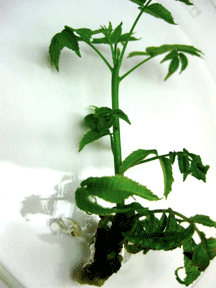
Figure 1. Black walnut shoot elongating in
vitro
from a
single node after 8 weeks.
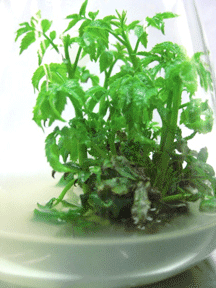
Figure 2. A cluster of black walnut shoots emanating from
a single node growing on a liquid medium after 10 weeks.
Yellowwood Genetics for Conservation and Education
By Keith Woeste, Research Molecular Geneticist
Yellowwood (Cladrastis kentuckea) is a small tree with smooth bark native to Indiana. It is found in the wild in Indiana in only a few places, including, not surprisingly, the Yellowwood State Forest, which is near Brown County State Park, a site familiar to many outdoorsy Hoosiers. Yellowwood has become increasingly popular for landscaping and as a street tree because it is small, stress tolerant tree that produces lovely, drooping clusters of white flowers on branch tips. Some of our readers may know yellowwood as Cladrastis lutea, but its formal name was changed a few years ago. Anyone familiar with yellowwood knows that it has unusual compound leaves with leaf-bases that cover up the terminal and axillary buds, making it a real puzzler for beginning dendrologists!
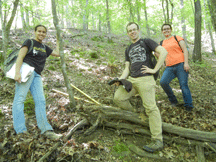
(Jade, Nick, and Colleen)
Earlier this summer, Jade Tonos and Colleen Hartel, two undergraduate students in Purdue’s Department of Forestry and Natural Resources (FNR), travelled with Keith Woeste (USDA Forest Service HTIRC) and Nick LaBonte (M.S. student, FNR) to Arkansas. Their goal was to collect samples of Yellowwood from a stand of hardwoods growing on private land near Little Rock. While in Arkansas, they were guided to the trees by Theo Witsell, the Curator of the Arkansas Natural Heritage Commission, and joined by Marty Spetich, who earned his PhD at Purdue and now works for the USDA Forest Service.

(Yellowwood site in Indiana on a steep rocky slope)
Getting to the trees was an adventure that required a short canoe trip (at the foot of Remmel Dam) and a climb up an imposingly steep slope covered with loose rock. Once on the other side of the spillway, Theo explored the site looking for rare endemics (he found some). Woeste and his students collected leaves from seedling and mature yellowwood trees, some as large as 24 inches dbh—huge for a yellowwood. They also recorded the location, size and condition of the trees they sampled. Some of the oldest trees had bark that was nearly black in color; that was surprising, as yellowwood bark is usually ashy gray, like beech. Why were they collecting yellowwood leaves? They are working with the Nature Conservancy to understand how yellowwood’s genetic diversity is arranged on the landscape. Unlike many familiar tree species, yellowwood populations are not continuous; instead, the trees grow in (apparently) isolated clusters. Probably the location and size of these clusters is determined by the unusual and particular habitat that yellowwood seems to prefer in nature, i.e., steep, rocky, north-facing slopes. They would like to find out if the yellowwood trees in Kentucky (which were collected last year from Tom Dorman Nature Preserve), Indiana, Missouri, and Arkansas are closely related or if they have been separated from each other since they took refuge from the last episode of glaciation to cover the Midwest (the Wisconsin Glacial Episode, about 100,000 years ago until as recently as 10,000 years ago). They would also like to find out if yellowwood trees now growing in the urban forest might serve as a suitable reserve of genetic diversity in case some of the wild populations are lost.
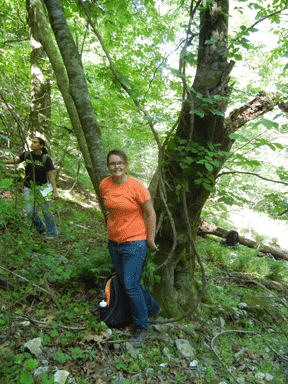
(Colleen and Jade near a large yellowwood in Arkansas)
Jade and Colleen, the two undergraduates who went on the collection trip, have been working on the yellowwood genetics project for two years. Both women began their freshman year at Purdue by working in the FNR genetics laboratory with Keith Woeste. Now both are dedicated and highly skilled geneticists, comfortable with the extremely technical procedures required to understand the population genetics of hardwood trees and other species. Both women have won awards for their research. Theirs is an outstanding example of how undergraduates contribute to the work of HTIRC, and how HTIRC works with undergraduates to provide training and experiences that will make them better professionals. Next up for Colleen and Jade is the completion of their data set, the analysis and eventual publication of their results in a peer-reviewed journal. Not a bad start to a career, and an important contribution to our understanding of a rare but important hardwood resource, the yellowwood tree.
The Indiana Chapter of The American Chestnut Foundation (TACF) has its Annual Branch Event
The Indiana Chapter of The American Chestnut Foundation (TACF) met near Vallonia State Nursery in southern Indiana for its annual Branch Event. Forty members and guests were in attendance, including TACF’s CEO Bryan Burhans, and Indiana’s State Forester Jack Seifert. A meal was catered and enjoyed by all. Bryan spoke about TACF breeding program and future goals. HTIRC Tree Breeder and TACF member Jim McKenna gave a presentation on chestnut breeding efforts in Indiana. Bruce Wakeland, “Mr. Chestnut” of Indiana and longtime TACF member, spoke on current and future restoration efforts throughout the chestnut’s range.
There was a silent auction for all to take part in, and door prizes were awarded at the end of the event. Overall it was an enjoyable get-together and plans are for another Branch Event next fall that is more centrally located within the state.
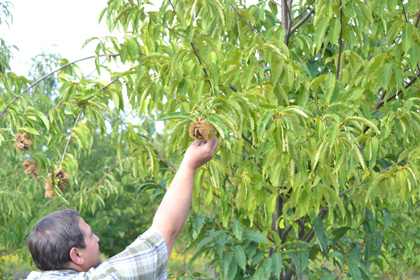
HTIRC Cooperates with Woody Biomass Conference
The Hardwood Tree Improvement and Regeneration Center was a cooperator with several other entities in presenting a conference and field program on woody biomass harvesting in Indiana on September 26 to 28, 2012. Woody biomass is used in a variety of markets and products and additional uses may be on the horizon as experimentation with solid and liquid biomass fuels continues. The conference provided information on the use and management of biomass in relation to forest and wildlife management, as well as economic and policy issues. Presenters represented state and federal agencies, private enterprise, universities, and industries. Many attendees considered the program highlight a field tour to an active combined sawlog and biomass harvesting operation on a silviculture experiment site at Southeast Purdue Agriculture Center in Southeastern Indiana.

Combined sawlog and biomass harvesting operation sorting and processing materials for optimum utilization.
Have questions about tree planting? This series of publications can be viewed or downloaded free of charge. Planting and Care of Fine Hardwood Seedlings
Van Eck Scholarships available for graduate research with the HTIRC.
Ask the HTIRC: email Lenny Farlee with your tree planting and forest management questions and we’ll help you find the answers.
